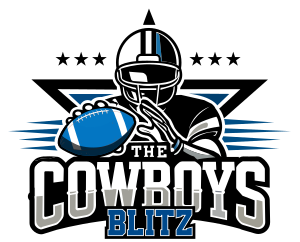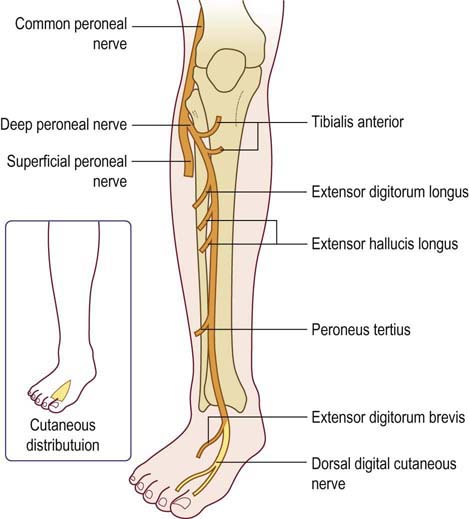Sure thing.
Preface: A motor nerve will synapse with a muscle at a neuromuscular junction. This location signifies the end of the motor nerve and the beginning of the muscle fiber. A large enough action potential ending at the nerve terminal causes release of certain neurotransmitters that act on the muscle fiber, which after a few more steps later, can cause the muscle fiber to contract. In addition, a muscle is connected to bone via tendons. When the muscle contracts, it pulls on the tendon and, subsequently, causes movement of the bone.
----------
The most distal (furthest from the knee/closest to the toes) motor terminal synapse of the deep peroneal nerve is the deep peroneal nerve's innervation of 2 muscles in the foot (extensor hallucis brevis and extensor digitorum brevis). The former's role helps in dorsiflexing the big toe and the latter's role is dorsiflexing toes 2-4. (Note: other muscles in the lower leg which are innervated by the deep peroneal nerve have major roles in dorsiflexion of the foot and of the toe. I'm just using the most distal muscles as an example. Below is a diagram showing the branches of the deep peroneal nerve to the "other muscles" in the lower leg and the branch to the extensor digitorum brevis. The branch to extensor hallucis brevis is not shown. Disregard the branch to the dorsal digital cutaneous nerve; it is sensory, not motor.)
The extension/dorsiflexion of the toes via extensor hallucis brevis and extensor digitorum brevis happens like this:
1. Motor action potential gets sent down from the brain -> spinal cord -> spinal nerves L3-S4 leave spinal cord -> form sciatic nerve -> branches into common peroneal nerve -> branches into deep peroneal nerve -> synapses at the muscle fibers of both extensor hallucis brevis and extensor digitorum brevis, among others.
2. When the action potential reaches the end of the axon, it releases neurotransmitters into the synaptic cleft (junction between terminal axon and muscle fiber). The neurotransmitter in this case would be acetylcholine. Acetylcholine binds to receptors on the muscle fiber, and if it causes a strong enough end-plate potential, the muscle will end up contracting. (There is a lot more detail to this I won't bother going into.)
3. If you look for the extensor hallucis brevis (EHB) and extensor digitorum brevis (EDB) below, you will see that EHB's tendon attaches to the top of the proximal phalanx of the big toe and EDB's tendons attach to the top of the middle phalanges of toes 2-4. So, when the EHB and EDB contract, they tighten these tendons, causing the toes to point upwards (dorsiflexion).
In summary, the deep peroneal nerve only needs to reach and synapse with these two muscles for them to be able to have the motor control over dorsiflexing toes 1-4. It does not need to reach all the way to the toe itself.
Let me know if you have any questions, and Id be happy to answer.







